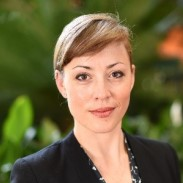Polymer Hydrogels for Cancer Therapy
A special issue of Gels (ISSN 2310-2861). This special issue belongs to the section "Gel Applications".
Deadline for manuscript submissions: closed (10 January 2024) | Viewed by 11206
Special Issue Editors
2. Translational Research Institute, (TRI), Brisbane, QLD 4102, Australia
Interests: cancer models; tissue engineering; tumor microenvironment; bioengineering; biomaterials; bone; bone metastasis; prostate cancer; breast cancer; personalized medicine; physical science of cancer; hydrogels; scaffolds; bioprinting
2. Herston Biofabrication Institute, Metro North Hospital and Health Services, Herston, QLD 4006, Australia
3. Centre for Biomedical Technologies, Queensland University of Technology (QUT), Brisbane, QLD 4059, Australia
4. School of Information Technology and Electrical Engineering, Faculty of Engineering, Architecture and Information Technology, The University of Queensland, St Lucia, QLD 4067, Australia
Interests: hydrogels; 3D cell culture; tissue engineering; regenerative medicine; 3D bioprinting
Special Issue Information
Dear Colleagues,
The Special Issue on ‘Polymer Hydrogels for Cancer Therapy’ is dedicated to recent advancements in the synthesis, fabrication, characterization, and use of polymer-based hydrogels for cancer research. With a focus on cancer treatment, post-surgery tissue regeneration and disease modelling, a broad range of topics from fundamentals, physicochemical and biological characterization, and applied aspects will be discussed. This includes polymeric hydrogels as drug delivery systems, in vitro and in vivo cancer models, and personalized medicine platforms.
When treating heterogenous and lethal diseases such as cancers, it is now well-known that tumor resection surgery coupled with systemic chemotherapy often includes heavy side-effects and poor drug efficiency at the tumor site, while reducing healing time from surgery. Hydrogels, which are comprised of water insoluble three-dimensional networks of polymer chains with tunable chemistry and degradation profiles, have been proposed as an attractive alternative to this issue. They promise localized controlled drug release at the tumor site upon passive or stimuli-based response (pH, temperature), and can be coupled with tissue regenerative strategies to repair the diseased tissue. Yet, the full potential of such systems is yet to be demonstrated and translated to the clinic. The precise control of hydrogels as drug delivery systems necessitates a deeper mechanism-driven design and understanding, and characterization at multiple scales. This includes, among others, molecular and supramolecular architecture, release kinetics, and macroscale behavior upon degradation. Physicochemical characteristics equally require correlation with biological assessment in vitro and in vivo but also must be designed with a stronger real-world mindset. Some of the related issues indeed involve lack of; translational feasibility; easy-to-use biofabrication strategies; automation; and scale-up manufacture, which all need addressing to warrant clinic adoption in the future.
In cancer modelling and personalized medicine, synthetic and semi-synthetic hydrogels represent an excellent alternative to basement membrane extracts (BME) such as Matrigel. As highly tailorable biomaterials for tumor bioprinting, hydrogels open the door to more physiological (non-2D) mechanistic cancer study and drug screening. Hydrogels offer inertness or directed cell induction with added ECM components, and therefore provide the ability for cells to deposit their own ECM or provide cues to develop a specific phenotype with increased tumor microenvironment mimicry. These options mean that decreased biomaterial heterogeneity is achievable when using synthetic or semi-synthetic materials, while Matrigel compounds patient heterogeneity with its intrinsic batch-to-batch variability and inability to control key physical parameters such as the ECM stiffness. While PEG-based hydrogels have been a well-studied approach to address the Matrigel conundrum, many new polymers, copolymers and composite polymers have emerged to provide enhanced support to the culture of patient-derived cancer organoids and explants, and will be discussed in this issue.
Since it is impossible to cover all aspects of hydrogels for cancer science in one issue, this Special Issue will contain only the best representative, high-quality, examples that bridge multiple research gaps in the field, in the hope to stimulate new research in polymer hydrogels for cancer research.
Dr. Nathalie Bock
Dr. Christoph Meinert
Dr. Khoon Lim
Guest Editors
Manuscript Submission Information
Manuscripts should be submitted online at www.mdpi.com by registering and logging in to this website. Once you are registered, click here to go to the submission form. Manuscripts can be submitted until the deadline. All submissions that pass pre-check are peer-reviewed. Accepted papers will be published continuously in the journal (as soon as accepted) and will be listed together on the special issue website. Research articles, review articles as well as short communications are invited. For planned papers, a title and short abstract (about 100 words) can be sent to the Editorial Office for announcement on this website.
Submitted manuscripts should not have been published previously, nor be under consideration for publication elsewhere (except conference proceedings papers). All manuscripts are thoroughly refereed through a single-blind peer-review process. A guide for authors and other relevant information for submission of manuscripts is available on the Instructions for Authors page. Gels is an international peer-reviewed open access monthly journal published by MDPI.
Please visit the Instructions for Authors page before submitting a manuscript. The Article Processing Charge (APC) for publication in this open access journal is 2600 CHF (Swiss Francs). Submitted papers should be well formatted and use good English. Authors may use MDPI's English editing service prior to publication or during author revisions.
Keywords
- polymer chemistry
- polymer synthesis
- bioprinting
- biofabrication
- controlled drug delivery
- cancer therapy
- injectable hydrogels
- cancer models
- preclinical hydrogel models
- high-throughput hydrogels
- hydrogel composites
- tumor microenvironment
- extracellular matrix
- tissue engineering
- regenerative medicine








